Free September Desktop Calendar
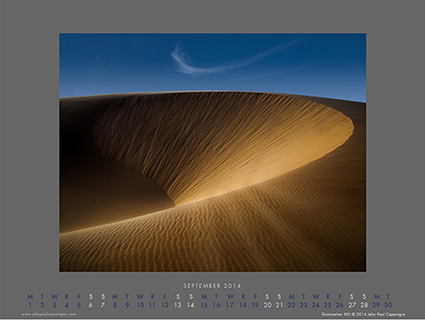
My free September 2014 Desktop Calendar features a new image from Skeleton Coast, Namibia.
Download it here.

My free September 2014 Desktop Calendar features a new image from Skeleton Coast, Namibia.
Download it here.
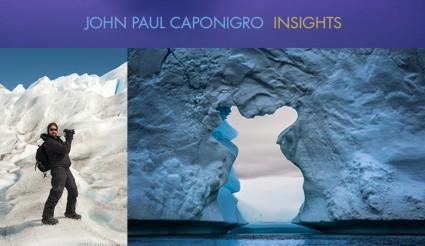
My enews Insights broadcasts today at 3:15 pm EST.
In this issue …
I’m announcing our next Fly Antarctica / Sail Across The Circle Workshop. Participants were thrilled this winter and we can’t wait to go back! Space is limited so reserve yours now! There’s 1 space left in our Greenland Ice Fiords & Auroras Workshop.
Seth Resnick and I have released a new ebook Antarctica / Two Visions. In addition to inspiring you with images of Antarctica, it will give you many insights into how much we’ve influenced each other by working so closely together and yet still remain so different. It’s free for a limited time only!
Three Raw Processing Resources and 21 Recommended Books On Digital Processing will help you make the most of your files.
Find out about photographer Wynn Bullock – a new exhibit, new book, and classic quotes.
Sign up for my enews Collectors Alert and get a one time only 50% print discount.
There’s more … exhibits, lectures, articles, calendars, green actions, etc.
Enjoy!
Sign up for Insights enews free here.
“Julieanne takes a close look at the feature enhancements and refinements made to the Crop tool, workflow settings, and batch saving capabilities in Adobe Camera Raw. In addition she also covers improvements made to the Spot Removal Tool, Noise Reduction, Local Adjustment Brush, and Histogram.”
View more Photshop Videos here.
Learn more in my digital printing and digital photography workshops here.
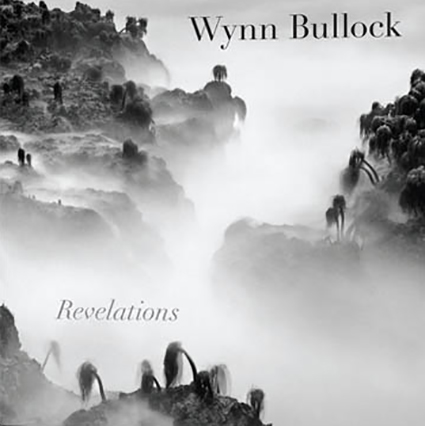
“Wynn Bullock was one of the most significant photographers of the mid-twentieth century. A close friend of influential West Coast artists Ansel Adams and Edward Weston and a contemporary of Minor White and Frederick Sommer, Bullock created work marked by a distinct interest in experimentation, abstraction, and philosophical exploration. Bullock’s photography received early recognition in 1941, when the Los Angeles County Museum of Art staged his first solo exhibition. His mature work appeared in one-man shows at the Bibliothèque nationale de France, Paris; the Royal Photographic Society, London; the Metropolitan Museum of Art, New York; and the Art Institute of Chicago, among other prestigious venues. Bullock’s pictures Let There Be Light and Child in Forest have become icons in the history of photography, following their prominent inclusion in The Family of Man, Edward Steichen’s landmark 1955 exhibition at The Museum of Modern Art.
Despite early acclaim, however, the true breadth and depth of Bullock’s career have remained largely in the shadows. Wynn Bullock: Revelations shines new light on this major photographer and offers the most comprehensive assessment of his career in nearly forty years. Produced by the High Museum of Art in partnership with the Center for Creative Photography this retrospective traces Bullock’s evolution, from his early experimental work of the 1940s through the mysterious black-and-white imagery of the 1950s and the color/light abstractions of the 1960s, and to his late metaphysical photographs of the 1970s. The book presents 110 images, including some from the Bullock Estate that have before never been published. An essay by the High’s curator of photography Brett Abbott explores the nuances of Bullock’s approach to photography and its fascinating relationship to the history of science and philosophy. The volume also includes an illustrated chronology, a bibliography, selected collections, an exhibitions history, a list of plates, and notes.”
Get the book here.
Find out about the exhibit here.
Read a collection of quotes by Wynn Bullock here.
Find out more about Wynn Bullock here.
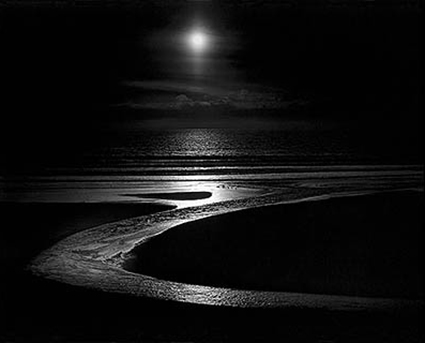
June 14, 2014 – January 18, 2015
“This exhibition represents the most comprehensive assessment of photographer Wynn Bullock’s (American, 1902-1975) extraordinary career in nearly forty years. Bullock worked in the American modernist tradition alongside colleagues and friends Edward Weston, Harry Callahan, and Ansel Adams. This show presents the rare opportunity to see over 100 works of art by this innovative photographer.
The arc of Bullock’s innovative achievements is surveyed in Wynn Bullock: Revelations through more than 100 prints, from his early experimental work of the 1940s, through the mysterious black-and-white imagery of the 1950s and color light abstractions of the 1960s, to his late metaphysical photographs of the 1970s. Wynn Bullock: Revelations coincides with a major gift from the Bullock Estate to the High Museum, making Atlanta one of the largest repositories of Bullock’s work in the country.
Bullock’s work was guided by an intense interest in the mid-twentieth-century dialogue about the structure of the universe and humanity’s place within it. Drawn to the spirit of experimentation that marked scientific and philosophic endeavors of his day, Bullock used knowledge about quantum physics, special relativity, and the space-time continuum as a reference point for his own intuitive and deeply personal explorations of the world. Photography for Bullock was a way of meditating on the frightening and exhilarating idea that there is much more to the world than is commonly understood through ordinary perception, and he was passionate about conveying that revelation to others through his work.”
Find out more about this exhibit here.
Find out about the book Revelations here.
A concurrent exhibit Radiant Energy in Atlanta at Lumiere Fine Art Photography Gallery features contemporary prints from three Collector Edition Portfolios produced by Lumiere in cooperation with the Bullock family estate – Classic Black & White, Color Light Abstractions, and Seascapes.
Find out more about this exhibit here.
Read a collection of quotes by Wynn Bullock here.
Find out more about Wynn Bullock here.
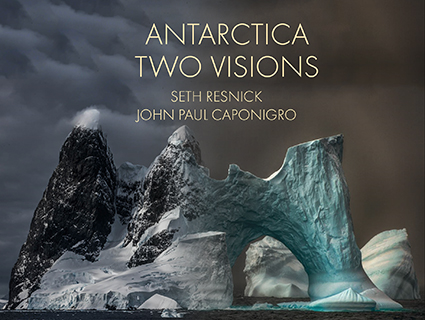
Enchanting Antarctica is explored in this beautiful ebook.
Individual portfolios are followed by a selection of images shot at the same locations at the same times by both artists.
Essays include personal responses to place and insights into the many influences that arise by working side-by-side.
It’s inspiring!
46 images
60 pages
It’s free for a limited time only!
Download it here!
Find out about our next Antarctica workshop here.
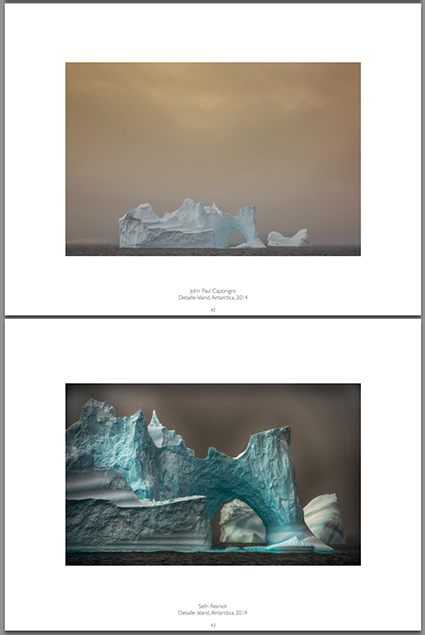
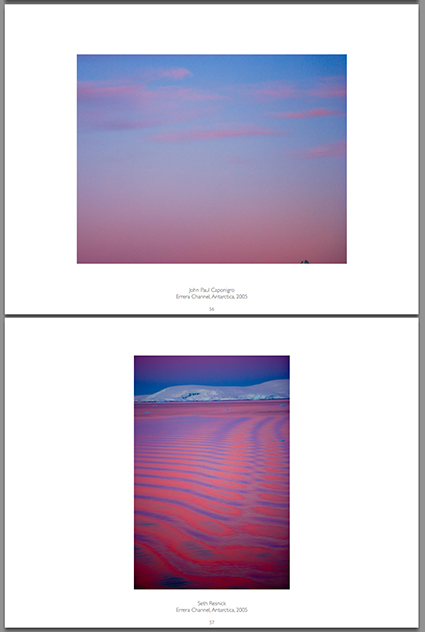
Aug 6 – Sep 1
Aug 28 4- 6 pm Gallery Talk
Maine Media Workshops, 18 Central Street, Rockport, Maine, 04856
“The works of father and son Paul Caponigro and John Paul Caponigro are featured in the photographic exhibit “Two Generations”. Over twenty images by each artist highlight the two careers of this family of artists. Responding to interest in seeing their work together the show “Two Generations” was assembled and first exhibited in Rockport Maine at CMCA. Now it returns to Rockport at MMW fully updated.
The juxtaposition of traditional darkroom images and the more contemporary digital photographs may seem startling at first. Both artists utilize a different medium and a different vision. Paul is a traditional straight shooter and John is a process artist. After careful inspection what is more apparent are the similarities, the vestiges of the fact that this is the work of father and son. it is apparent each artists work influences the other and many of their key interests are the same. Both artists share a deep reverence for nature, a love of stone, a fascination with the subtle palettes of the natural environment, and a strong dedication to their craft.”
Find directions and contact info here.

Here’s a collection of my favorite quotes by Sam Abell.
“One of the things that I most believe in is the compose and wait philosophy of photography. It’s a very satisfying, almost spiritual way to photograph. Life isn’t’ knocking you around, life isn’t controlling you. You have picked your place, you’ve picked your scene, you’ve picked your light, you’ve done all the decision making and you are waiting for the moment to come to you….” – Sam Abell
“But there is more to a fine photograph than information. We are also seeking to present an image that arouses the curiosity of the viewer or that, best of all, provokes the viewer to think – to ask a question or simply to gaze in thoughtful wonder. We know that photographs inform people. We also know that photographs move people. The photograph that does both is the one we want to see and make. It is the kind of picture that makes you want to pick up your own camera again and go to work.” – Sam Abell
“As I have practiced it, photography produces pleasure by simplicity, I see something special and show it to the camera. A picture is produced. The moment is held until someone sees it. Then it is theirs. Photography, alone of the arts, seems perfected to serve the desire humans have for a moment – this very moment – to stay.” – Sam Abell
“My first priority when taking pictures is to achieve clarity. A good documentary photograph transmits the information of the situation with the utmost fidelity; achieving it means understanding the nuances of lighting and composition, and also remembering to keep the lenses clean and the cameras steady.” – Sam Abell
“And that desire – the strong desire to take pictures – is important. It borders on a need, based on a habit: the habit of seeing. Whether working or not, photographers are looking, seeing, and thinking about what they see, a habit that is both a pleasure and a problem, for we seldom capture in a single photograph the full expression of what we see and feel. It is the hope that we might express ourselves fully – and the evidence that other photographers have done so – that keep us taking pictures.” – Sam Abell
“Above all, it’s hard learning to live with vivid mental images of scenes I cared for and failed to photograph. It is the edgy existence within me of these unmade images that is the only assurance that the best photographs are yet to be made.” – Sam Abell
“You know you are seeing such a photograph if you say to yourself, “I could have taken that picture. I’ve seen such a scene before, but never like that.” It is the kind of photography that relies for its strengths not on special equipment or effects but on the intensity of the photographer’s seeing. It is the kind of photography in which the raw materials – light, space, and shape – are arranged in a meaningful and even universal way that gives grace to ordinary objects.” – Sam Abell
“In my work, the most elaborate – and essential – accessory is a standard tripod. For spiritual companions I have had the many artists who have relied on nature to help shape their imagination. And their most elaborate equipment was a deep reverence for the world through which they passed. Photographers share something with these artists. We seek only to see and to describe with our own voices, and, though we are seldom heard as soloists, we cannot photograph the world in any other way.” – Sam Abell
“It matters little how much equipment we use; it matters much that we be masters of all we do use.” – Sam Abell
“…just like some people’s instinct to photograph is triggered by vacation… assignments might be that to me and that’s why I’ve built my life around assignments. That was the way to live the photographic life.” – Sam Abell
“I think of myself as a writer who photographs. Images, for me, can be considered poems, short stories or essays. And I’ve always thought the best place for my photographs was inside books of my own creation.” – Sam Abell
“There isn’t an aspect of book creation I don’t enjoy, and there has always been a book in my life to dream about or work on.” – Sam Abell
“Life rarely presents fully finished photographs. An image evolves, often from a single strand of visual interest – a distant horizon, a moment of light, a held expression.” – Sam Abell
“The neatest part of this book I’m working on – to me – are the pictures that show the process… Because photographers… think things through and… it isn’t luck, and it isn’t random and it isn’t accidental. It isn’t.” – Sam Abell
“My best work is often almost unconscious and occurs ahead of my ability to understand it.” – Sam Abell
“A mad, keen photographer needs to get out into the world and work and make mistakes.” – Sam Abell
“In almost every photograph I have ever made, there is something I would do to complete it. I take that to be the spirit hole or the deliberate mistake that’s in a Navajo rug to not be godlike, but to be human.” – Sam Abell
“Photographs that transcend but do not deny their literal situation appeal to me.” – Sam Abell
“The best lesson I was given is that all of life teaches, especially if we have that expectation.” – Sam Abell
“How the visual world appears is important to me. I’m always aware of the light. I’m always aware of what I would call the ‘deep composition.’ Photography in the field is a process of creation, of thought and technique. But ultimately, it’s an act of imaginatively seeing from within yourself.” – Sam Abell
“Essentially what photography is is life lit up.” – Sam Abell
Find out more about Sam Abell’s Photographic Life here.
Find more photographer’s quotes here.
View photographer’s favorite quotes here.
Looking for great books on digital printing? Browse this collection of my favorites.
From state-of-the-art inkjet pure and simple to hybrids that incorporate historic processes, these books cover a wide range of topics, offering a wealth of valuable information.
Enjoy!
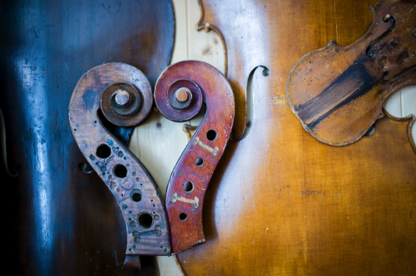
By Olaf Willoughby
“A Visual Conversation sets up a rhythm, a pattern of communicating in which images fit with one another, with a chosen text, a piece of music or artwork of any kind. It helps develop our voice and vision.
Working through a series of Visual Conversations, each becomes a stepping stone which exercises the creative muscles and takes us beyond our regular shooting routines.
Visual Conversations work so well because they are based on the centuries old principle of ‘call and response’. A tradition of improvised exchange evident in everything from Hindu spiritual chants to modern day blues/gospel and jazz. From Japanese Renga linked poetry circles to folded paper stories.
How does this work in practice? I select an image which resonates, share it with you and ask you to shoot an image which rhymes, fits or starts a conversation with the original. Pretty straightforward, although there are systematic approaches to doing this. And still more ways of building that into a dialogue.
Now what if I select a painting by Rothko, or a poem by Edgar Allen Poe or Roberta Flack singing, ‘The first time ever I saw your face’? It’s a little more difficult. It requires more intense study and understanding of the original work of art to interpret it photographically. It stretches our minds to think about art in new ways.
Or how about if we develop the conversation into a narrative through storytelling? There are multiple permutations leading into other exercises…. I’m sure you get the idea. Add into this group discussion and feedback and it becomes an exciting learning experience. Each call and response takes us out of our routine and asks us to think differently about our photography.
But that’s not all. What makes this special is that your creativity can be extended beyond assignments into the process itself. As you’d expect, some Conversations involve working solo but others take ‘the road less travelled’ and involve working together on shared projects.
There is a spectrum of co-operation in the arts. Whilst some prefer to write books alone in coffee shops, others operate in collectives. Some partner up at different stages in the production process (choreographer/dancer, author/editor) and some of the most famous simply collaborate. Think Lennon & McCartney, Picasso & Braque. Look around. Every movie, play, symphony, rock ballad, even architectural space and garden involves artists working together. Yet collaboration is rare in photography. There are examples like Bernd & Hilla Becher or today, the Starn Twins but they are few and far between.
Occasionally we catch a glimpse of the collaborative spirit in photo workshops. At the end of the day, participants gather to share their solo work and you can feel the buzz in the air as people are amazed at the different ways of seeing and shooting, even though they were often at the same location.
Sharing projects captures that buzz and helps us let go of the need to control. We both give and receive in creative decision making and come to see our own work in a different light.
I’ve experienced the benefits of Visual Conversations and collaborative projects first hand. They are fun but clearing the creative blocks arising from routine ways of working can be challenging.Expect to be jolted. But also expect to benefit from taking a different approach to your photography and returning to your personal work refreshed and enhanced.
I’ve been fortunate to collaborate with Eileen McCarney Muldoon, a talented photographic artist in Jamestown, Rhode Island. We’ve captured that creative buzz and put it into a workshop. We’d be delighted if you would check it out. Even better, the course includes complimentary access to Leica equipment.
Plus a guest appearance during the week from a world renowned digital artist. I’ll leave you to guess who that might be!”
For more information contact: olafwilloughby@gmail.com or emmimageloft@gmail.com

